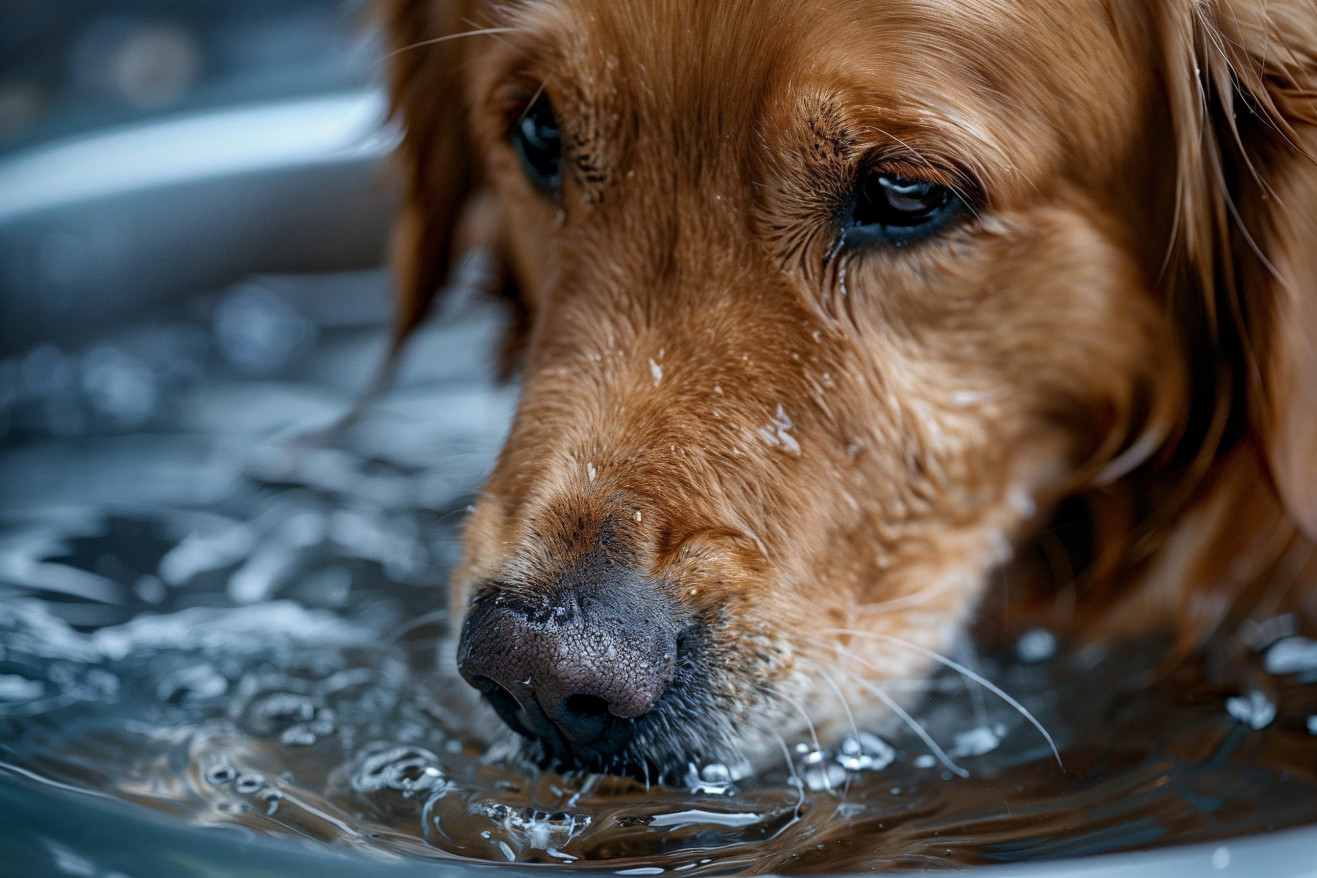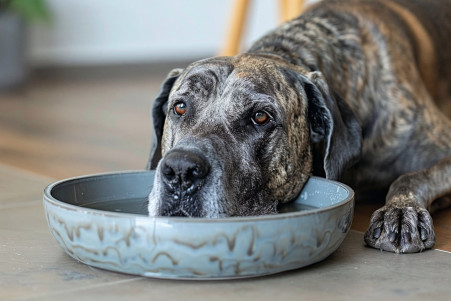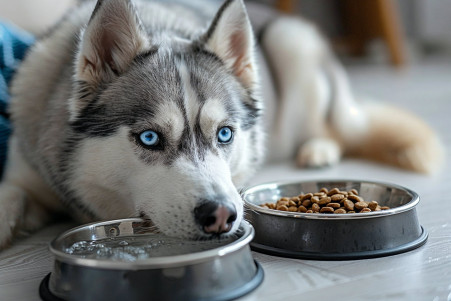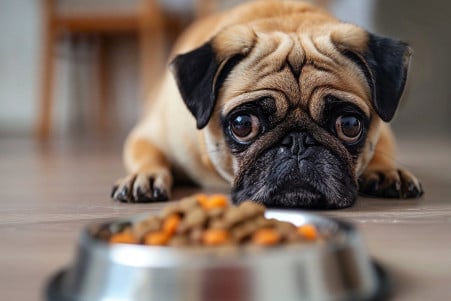How to Encourage Your Dog to Drink More Water: Effective Tips and Tricks
4 June 2024 • Updated 4 June 2024

If your dog doesn't seem to be drinking enough water, you may be wondering how to encourage your dog to drink more water so that you can prevent potential health problems. Making sure that your dog gets enough water every day is important for preventing dehydration, urinary tract infections, and kidney disease. There are several things you can do to help your dog drink more water, from adding low-sodium broth to their water to getting them a pet water fountain.
While there are some short-term reasons that your dog may not be drinking enough water, such as illness or hot weather, if your dog is consistently not drinking enough water, it could be a sign of a more serious problem. To make sure that your dog is getting the water that they need, we'll go over the advice of veterinarians on how to encourage your dog to drink more water. From tips and tricks to potential medical causes of excessive thirst or dehydration, you'll learn everything you need to know to make sure that your dog is getting enough water.
How can I get my dog to drink more water?
Recognizing Potential Medical Conditions and Risk Factors
There are several medical conditions that can have a big impact on how much water a dog needs. For example, Daily Paws notes that kidney disease, diabetes, and Cushing's disease can all lead to polydipsia, or excessive thirst, in dogs, which can cause them to drink more water than they normally would.
Meanwhile, age is a risk factor because senior dogs may drink less water due to lower activity levels and a reduced appetite. Pregnant and nursing dogs also have higher hydration needs, and smaller dogs are more likely to become dehydrated, according to veterinary professionals.
That said, if your dog is drinking a lot of water every day or showing signs of dehydration, such as sunken eyes, dry gums, and lethargy, it's important to see a vet as soon as possible. Ongoing polydipsia or dehydration could be a sign of an underlying medical condition that needs to be treated. In the worst-case scenario, dehydration can be fatal, so it's important to get medical help for your dog as soon as you notice that something is wrong.
Dog owners should also make sure to keep an eye on their dog's water intake, especially if their dog is at a higher risk due to a medical condition, pregnancy/nursing, old age, or being a small breed. By monitoring your dog's water intake on a regular basis, you can make sure that you catch any potential issues early and get the medical help you need in a timely manner. With the right care and attention to hydration, many medical issues that are related to dehydration can be avoided or managed effectively.
How to Get Your Dog to Drink More Water
The Perpetual Well blog recommends giving your dog treats or adding a splash of low-sodium broth to their water to make it more enticing. The Wags to Whiskers article also suggests using a circulating water fountain and placing water bowls in different areas of the house to increase the likelihood that your dog will drink.
As the Home Alive blog explains, adding moisture-rich foods like wet dog food, bone broths, and water-based treats to your dog's diet can help increase their water intake. It can also be helpful to create a drinking schedule and make sure your dog has access to water before and after meals, as well as before and after exercise and play.
Making sure your dog's water bowls are clean and the water is fresh is important, as dogs may be less likely to drink water that is dirty or has been sitting out for a while. To help make sure your dog's water is as appealing as possible, the Home Alive blog recommends changing the water often.
How to Make Sure Your Dog Stays Hydrated
Dogs are at risk of dehydration in the summer, especially since they need to drink 3-4 times more water than they usually do to stay properly hydrated. As Bowwow Labs explains, dogs need about 1 ounce of water per pound of body weight each day, but this number can go up when they're playing outside in the heat. It's important to make sure your dog has access to plenty of clean water and shaded areas to avoid dehydration.
To make sure your dog is getting enough water, the Darwin's Pet Food blog suggests giving your dog cooling treats like frozen broths and water-based pupsicles. When you're outside, make sure you bring water for your dog and take frequent breaks to let them drink. Wag Walking also recommends using a sprinkler or hose to play with your dog in the water, which can help them drink more.
Keep an eye on your dog for signs of dehydration and heatstroke, including heavy panting, tiredness, and dry gums. If you see these signs, take your dog to the vet right away because dehydration can be fatal. However, if you take the right steps, you can make sure your dog is healthy and happy even when the weather is at its hottest.
Overcoming Reluctance and Encouraging Water Intake
There are many reasons why a dog may be reluctant to drink water, including stress from a new environment, the water being dirty or stale, or the dog not liking the type or location of the water bowl. As explained by the Barc London blog, dogs that are in new environments may be less likely to drink, while older dogs and those with dental problems may avoid water bowls that are difficult to reach or uncomfortable.
The Bowman Animal Hospital blog suggests that pet parents experiment with different bowl shapes, materials, and locations in the home to see what their dog prefers. Another way to encourage water intake is to mix water into your dog's dry food or offer them treats that are high in moisture, according to the BeChewy article.
The Barc London blog emphasizes that it's important to make sure that dogs have a positive experience when they drink water, which can be done through praise and rewards. Pet parents should also make sure to give their dogs time to adjust to new ways of hydrating, and not give up if their dog doesn't take to a new water source or bowl right away. With time and patience, even the most reluctant dog can learn to enjoy drinking water.
Conclusion: How to Keep Your Dog Healthy and Hydrated
The Petco article stresses the importance of making sure that your dog has access to fresh, clean water at all times to avoid dehydration. An automatic water fountain can ensure that the water stays fresh and is always available. The article also suggests that pet parents can increase their dog's hydration by adding moisture to their meals with wet food, broths, and gravies.
For dogs that are spending time at the beach or pool, the Petco article warns that while the water may be refreshing, it can also lead to dehydration if ingested. It also recommends that pet parents apply pet-safe sunscreen to any areas of their dog's skin that are exposed to the sun.
The Petplan article notes that a dog's water needs can be influenced by a variety of factors, including breed, size, exercise, temperature, and diet. Signs of dehydration in dogs include tiredness, dry eyes, and heavy panting. To help dogs stay hydrated, the article suggests making sure that water bowls are kept clean and are easy to access, adding water to food, and using a pet fountain.
In addition to environmental and behavioral factors, a dog's water intake can also be impacted by medical conditions, pain, and the aging process, according to the Petplan article. Pet parents should talk to a vet if they notice that their dog is showing signs of dehydration or a decrease in their water intake on a regular basis.
With the right care, you can help ensure that you and your furry friend have a healthy, well-hydrated relationship.


